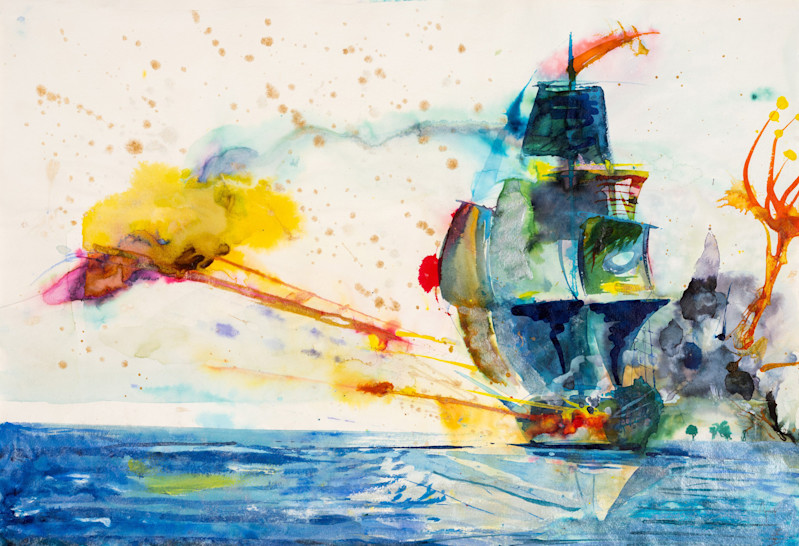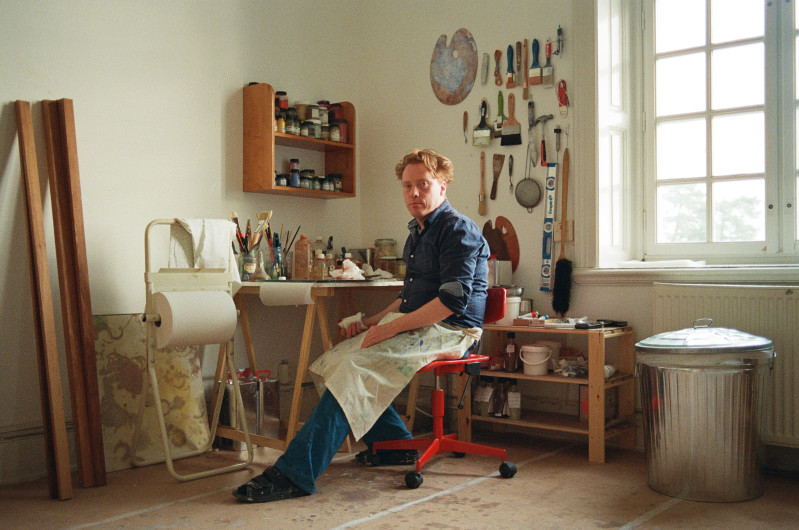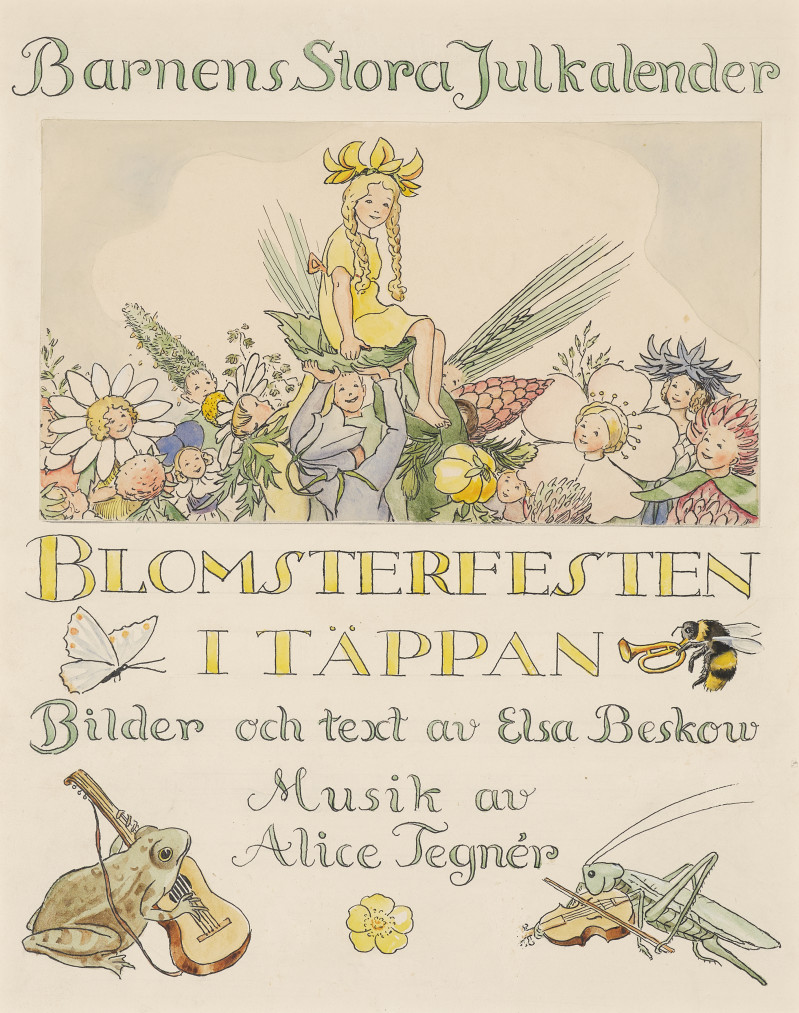Ulf Rollof Narcissus essay by Zara Kjellner
Essay
December 1, 2022
- Zara Kjellner

Ulf Rollof, in his home, Stockholm
At sixteen, Ulf Rollof is visiting the coast of the Pacific. America, with all its freedom and crisp oceanic air. In a henhouse, close to the waves, he freezes under a small electric blanket, which smells of sweat over his stomach. Is this where the pirates entered the picture? Or did his father, the navy commander in Karlskrona, first ignite his dreams of wildness and freedom?
Lying down to sleep in a child’s bed, fist clenched over your belly, feeling some tremors in your fingers, the ships behind your eyelids roaming the oceans, your heart beating and beating, your chest rising and falling… When a child sleeps, the world is never at rest, and the unfiltered dream of crossing the oceans is there. Rollof’s ships are reminiscent of something that has perhaps been lost to us: the grand adventure.

Ulf Rollof Rollof pirat - 17.04.2019, 2022, Handgjort bomullspapper tillverkat utav Moulin Richard de Bas, 48,5 x 67 cm ramad
As the pirate hauls his heavy crates onto the ship, he has no idea what the ocean will do to him; everything remains calm, undiscovered. The sky is simply sky, the ocean simply ocean. Perhaps you might hear a bird screech, like an omen, or feel the sunlight bear down on your neck and blind your eyes.
The pirate lets go of what he’s holding and stretches his body. He adjusts his little pirate hat, and before embarking, he spits into the thin blue strip of ocean we see shimmering between the ship and the quayside. Everything is cloaked in deceptive placidity, as the ship leaves the harbour in the light of dusk. However, no two sunsets are alike, and a pirate can never fully predict the motions of the ocean.
Ulf Rollof’s ship naively thunders toward the horizon, the sun rises, and we’re along for this speedy journey. Everything is play, everything is adventure–all the way to the inevitable battle. The pirate ships continue their voyages long after sunset. The sky opens onto new skies. Pain drips and drips, and perhaps we might detect something in the smoke that lingers after the cannons were fired–isn’t that a flower we see? A mouth? Is somebody standing at the mast, shouting? Isn’t that a little flower, standing there, howling something at us?
The ships don’t stop. Gravity and the laws of nature are on their side. To move is to survive. Rollof is, in no way, a placid artist. The pirate ships and the radiant flowers were painted in the moment, on the paper.
It’s not the moment that matters; it’s the motion. An earthquake comes and goes in mere seconds, leaving nothing as it was. The ground is no longer the same, the air has changed, and the animals have all roared off. The curvature of a flower can’t be captured precisely. One day, the face you see in the mirror will be completely different. A second passes before we can count it: one, one, one, has already become two, two, two.
Warping yourself beyond all recognition, putting your shirt on and entering the world from the wrongest possible direction. At the centre of Rollof’s outward-facing narcissuses is a fluorescent patch of colour. Almost luminescent, the centre of each flower expands and expands until all the petals have unfolded.

Ulf Rollof Nico, 2022, Mixed media på bomullspapper Fabriano, 88 x 68 cm ramad
Neon is the colour of protest, of demonstrators, haphazard spray paint on walls, advertisements, posters, the world making its presence known, over and over again. Here, nature is neon-coloured, incorrectly coloured, far too luminous. Rollof’s narcissuses aren’t mild-mannered, or soft–they howl and roar. Perhaps we might hear a bass note from the bloom’s mouth. Perhaps we could detect the reflective vest of a security guard on the bottom of the pirate ship. The world turns itself inside out, mirrors itself in itself, until nothing remains the same.
As the myth has it, the young Narcissus becomes so enamoured with himself that he can’t tear himself from his own reflection. For days and nights, he gazes at himself in the sheen of the lake’s surface, until, exhausted and desperate, he collapses. How can you truly reach that which is your own?
Time passes, and Narcissus never manages to kiss his own reflection. Many years later, Marilyn Manson is said to have sawn a rib off in order to be able to pleasure himself–but no means have been discovered through with the young Narcissus could make love to himself. In the end, he turns into a flower.
The narcissist who stares at himself until he goes blind is a counterpoint of sorts to Rollof’s fluorescent pirates and flowers. It is in nature’s essence to reach and turn towards the sun. All we need is the pull of gravity and the light, and the rest takes care of itself.
The neon pours from the mouth of the narcissus as it begins to speak, and the pirate ship voyages on, across a succession of stormy skies. In Rollof’s drawings, we encounter the opening that nature presents to us: nature isn’t a little box, it’s a big, howling, wide-open flower. All you need to do is venture out into it.

Ulf Rollof, in his home, Stockholm



